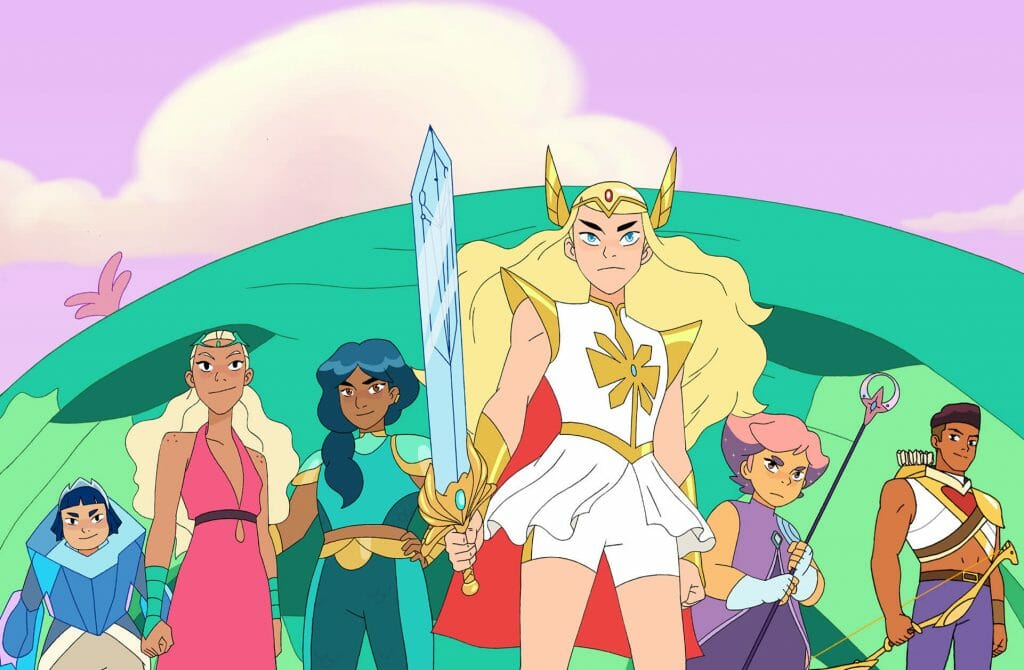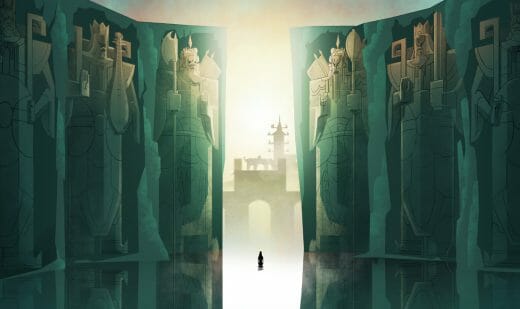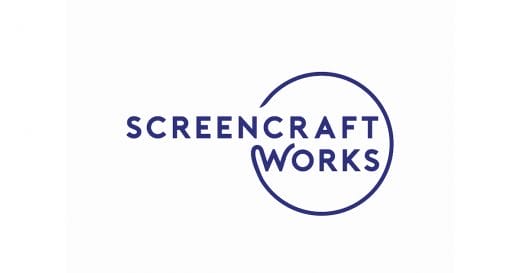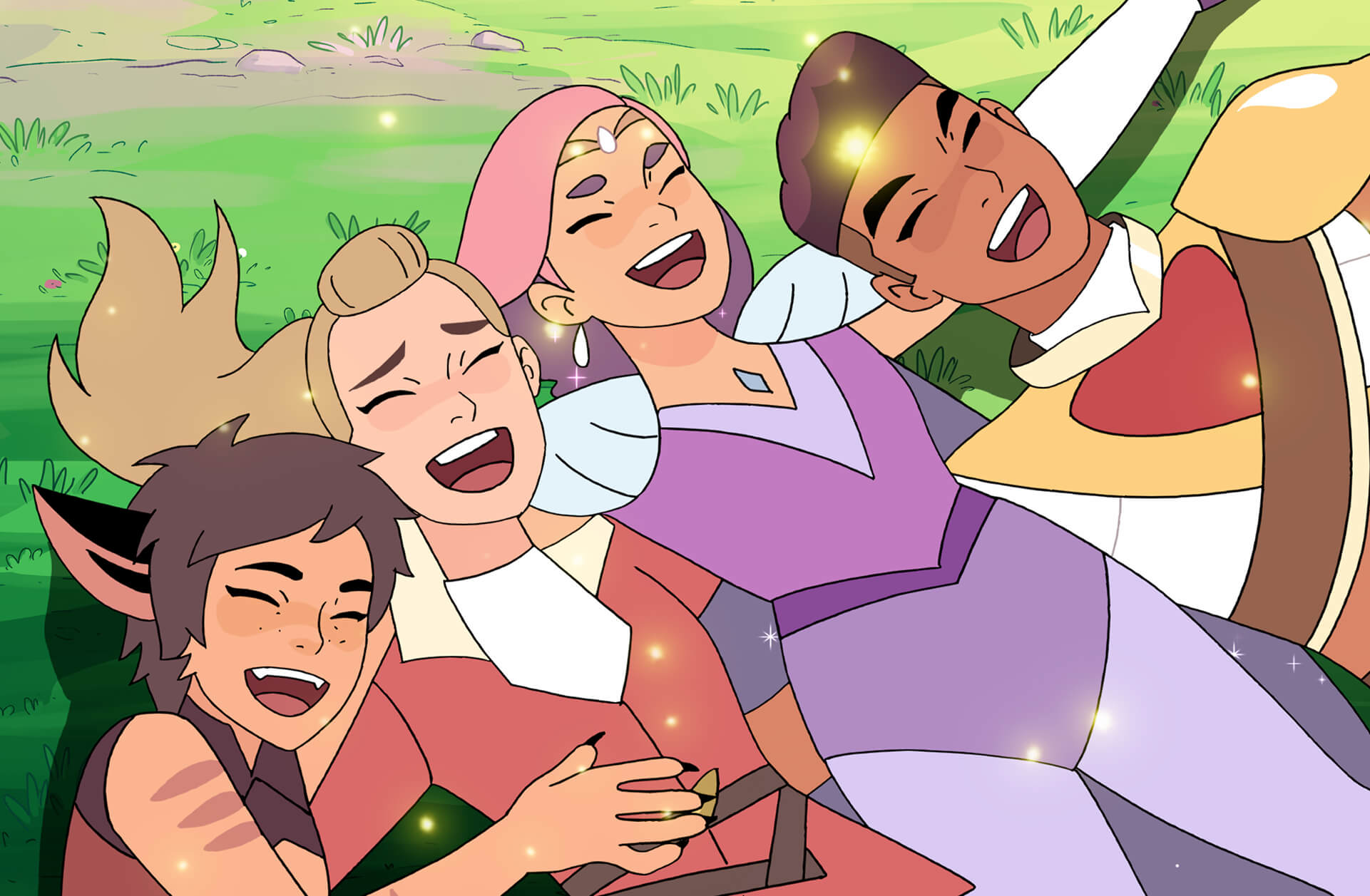
“We must be strong, we must be brave.”
DreamWorks She-Ra and the Princesses of Power ‘s theme song resonates on multiple levels, with the lush 80s-style power ballad echoing the eponymous main characters’ on-screen battle against the oppressive Horde as well as the behind-the-scenes struggle to authentically tell queer stories in children’s animation. Leading the charge in the battleground of boardrooms was executive producer and showrunner, Nate Stevenson.
For those who have not yet binged the fifth and final season of the Netflix and DreamWorks Animation Television hit, available to stream now, there are spoilers ahead. The series — a reboot of a He-Man spinoff from the 80s — has become so beloved among fans of all ages that it’s almost hard to believe one has not seen its penultimate chapter, particularly those closely following the central lesbian love story between the toon’s protagonist, Adora (a.k.a. She-Ra), and it’s anti-hero, Catra.
Seasons of backstory development, tension and flirting culminated in a kiss between the two near the series’ end. Breaking from the homophobic tropes of mainstream media, the resulting relationship was requited and neither character died.
He continues, “I really wanted to try and shake that up. What if we had central, dynamic, complex lesbian, gay and queer characters whose stories were compelling and relatable and inextricably tied to their queerness, and on top of that they had that kind of draw to them that makes them someone’s favourite character?”
That was more important to me than them being always good and perfectly aspirational and never making mistakes — they have darkness, they struggle and they make the wrong choices sometimes. That was something I was really hungry for, because I just don’t think you see it enough.
– Nate Stevenson
[This article was originally published in August 2020. It was updated in January 2023 to reflect the identity of the series’ creator.]
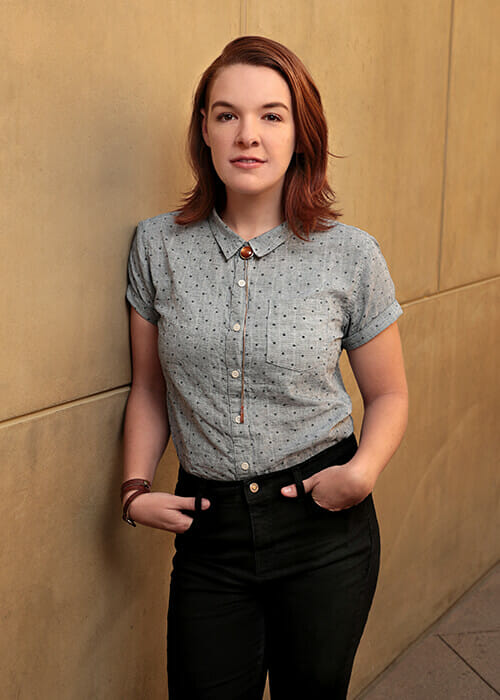
“I grew up really projecting on characters in kids’ TV that were queer-coded, but it was only ever subtextual. I didn’t understand it at the time, I just knew that there was something about them. Since then, canon representation of queer characters has really increased, but they’re often side or background characters and their stories aren’t usually central — and a lot of the time they’re othered by the narrative,” Stevenson tells us.
The hope is that the progress of She-Ra and the Princesses of Power is not just a moment, but rather a series on the frontlines of a movement for increased queer representation in animation. The world overall has changed enormously in a short period of time; in 2010, gay marriage was only legally acknowledged in seven countries, whereas now legal rights of same-sex spouses are recognized in 29. According to GLAAD’s Where We Are on TV 2019 report, there were 488 LGBTQ characters across all platforms last year compared to just 97 a decade ago.
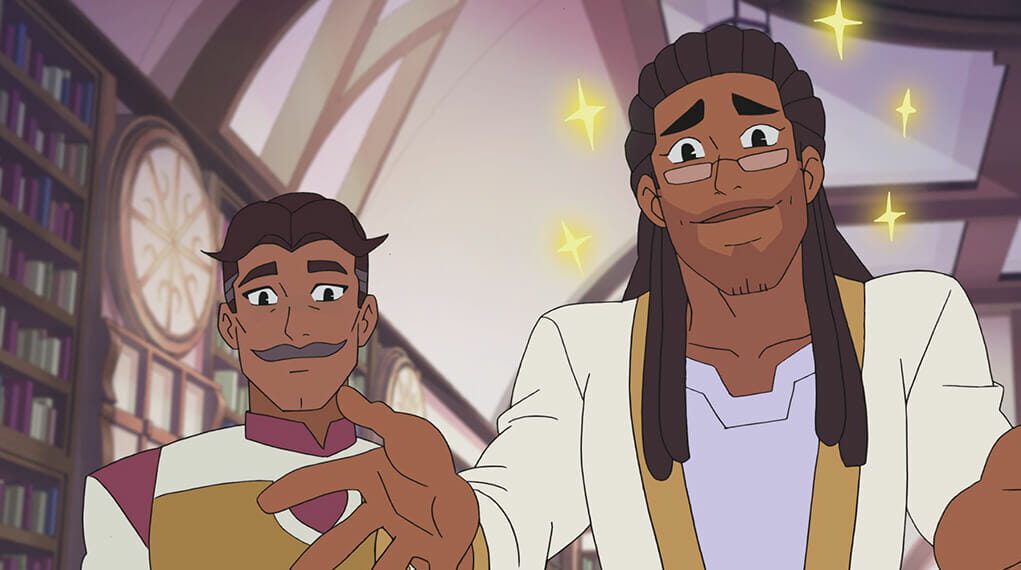
In a recent interview with Paper, Stevenson said that the road to diversity in his series — including not only the aforementioned Sapphic relationship, but also gay and gender non-binary characters like Double Trouble — was paved by Steven Universe creator Rebecca Sugar.
Steven Universe famously depicted the first lesbian marriage in a children’s animated series with the union of Sapphire and Ruby. In the same Paper interview, Sugar recalls how when she spoke to Cartoon Network executives: “They told us point-blank, ‘you can’t have these characters be in a romantic relationship.'” The concern was that, particularly if discussed or depicted, it could get the series pulled from a number countries and threaten its continuation.
Fortunately, the stage had been set and it was too late to go back. Both self-identified members of the queer community, Sugar and Stevenson felt the rainbow had no place in the shadows. According to the latter, he had always planned for She-Ra to be led by a lesbian relationship — though it was a game of Catra and mouse hiding it from studio executives at first.
Stevenson had been approached by DreamWorks to lead She-Ra and the studio loved his pitch. The content combines familiar territory for the multifaceted storyteller; he had previously combined science fiction and fantasy tropes in his comic series Nimona and Lumberjanes. Both also represented a range of gender and sexual identities.
While working on Nimona, which evolved from his university senior thesis into a HarperCollins graphic novel, Stevenson developed and flexed his narrative writing muscle to create a story that was true to himself and his vision. He explains, “I didn’t want to write about anything unless it was exactly what I wanted to write about. I discovered what it was about stories that I responded to — having this powerful central female character, having clear themes that are woven throughout the story as well as an epic cross between fantasy and sci-fi, that magitech kind of world.”
Once I was doing Nimona and I realized that I was doing the stories I was passionate about, the stories I wanted to tell, I couldn’t go back. I wanted to keep going in this direction. I wanted to keep telling these stories about strong female characters, about central queer relationships.
– Nate Stevenson
This passion ignited the spark of Lumberjanes, which was decidedly more of a team project than Nimona and would benefit his future leadership skills running an animation crew on She-Ra — with Stevenson going from working in a small group to 40 or 50 people. Suddenly, he found himself using his storytelling muscles to ensure everyone was aligned on the same narrative and vision.
Working in animation brought a new dimension to Stevenson’s creative process, allowing him to envelop himself in the world of She-Ra as if it actually existed and he could find it. Instead of being exclusively in his mind, as Nimona had, the toon became a shared vision with his crew — allowing for a collective, organic growth and exchange of ideas. Guiding them and keeping them working towards the same common goal was both creatively fulfilling and challenging, particularly working as a trans and, at the time, female-identified showrunner.
While the situation has improved in recent years, only 20% of creative roles in animation are occupied by women (according to Women in Animation). A joint study between WIA and USC Annenberg also found that women represented only 3% of animated film directors — dropping to only 1% for women of colour.
As Stevenson tells us, “[Being a female showrunner was] very stressful because not only are your successes and failures not your own, but you risk them representing the future of all women who hope to be showrunners, which is a huge responsibility and really scary. It’s hard taking risks when you worry that your failure might shut doors that have only just started to open. It was something that was constantly on my mind and it was constantly being brought up — even when people didn’t think they were bringing it up, they were bringing it up. And you start to notice the way that makes you feel crazy; when people start bringing up your gender in ways where they don’t think you’re talking about your gender, but they are. And then you’re like, ‘What’s that supposed to mean?'”
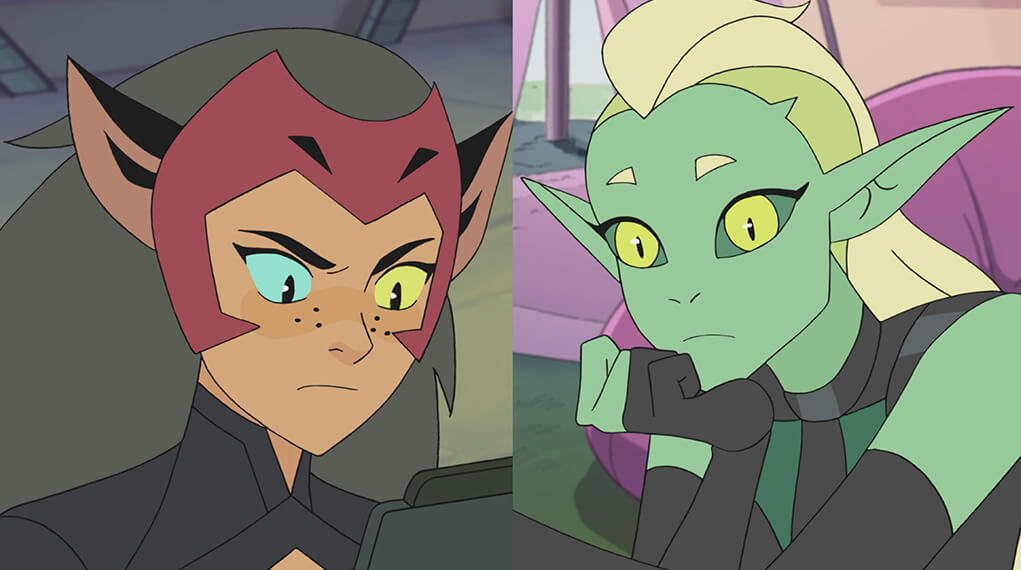
He continues, “And then on top of [managing a crew], you’re also carrying the weight of the women who’ve come before you and the women who are going to come after you. It’s an immense pressure and it can be very difficult to do your job the best way that you know how when there is so much extra that you have to think and worry about. My saving grace was there were so many people in the crew who understood. We were a largely female crew, a lot of whom were also young leaders who had moved into these roles for the first time. I think we all shared that feeling and that stress and that fear of failure.”
Stevenson feels these subtle slights against women are entrenched in our society — a vicious loop of patriarchy, gaslighting and second guessing. Fortunately, much like She-Ra and her fellow Princesses of Power, Stevenson assembled a crew of strong women including: story editor Josie Campbell; directors Jen Bennett and Kiki Manrique; art directors Elizabeth Kresin and Lamb Chamberlain; editor Michelle McMillan and many more.
With the strength of these women supporting him, Stevenson was able to authentically tell his She-Ra story — including the queer love story between Adora and Catra. It had struck a chord with him that the two had both grown up in the Horde but had no real relationship or emotional connection in the original series. He became passionate about pursuing a plot about two people who cared deeply for each other, but ended up on opposite sides of a war because of circumstance and misfortune.
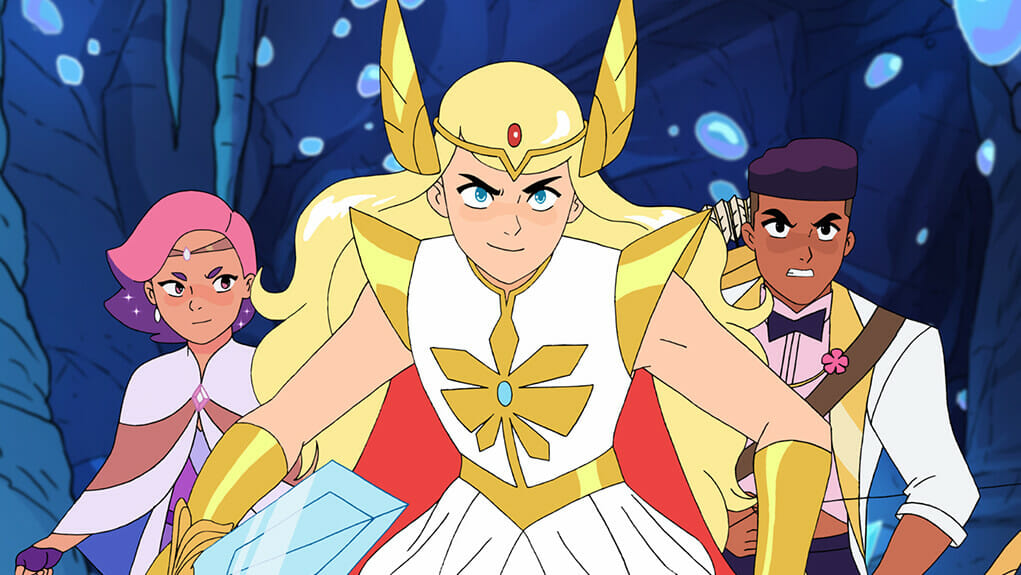
“I found it so tragic and just so rich. I really wanted to explore that relationship of how that would come about — how these two people who meant the world to each other ended up the bitterest of nemeses. Immediately, I think that it was both a combination of me being very compelled by that dynamic, but also casting AJ Michalka and Aimee Carrero as Catra and Adora and the chemistry between the two of them and the emotion that they brought that it became very clear, very quickly that there was something there,” describes Stevenson.
The relationship between Adora and Catra was flirted at in She-Ra and the Princesses of Power‘s first season, but Stevenson did not want a blink-and-you’ll-miss-it queer moment. Following in Rebecca Sugar’s footsteps, instead of leading with the relationship to studio executives, he kept patient.
He recalls, “It became more about that long game; if we can just make this relationship as multifaceted, as rich, as complex, as dark and as promising as I know it can be, we can reach the point where there’s just no other choice. There’s no other ending for it, but for them to come back together in this way.”
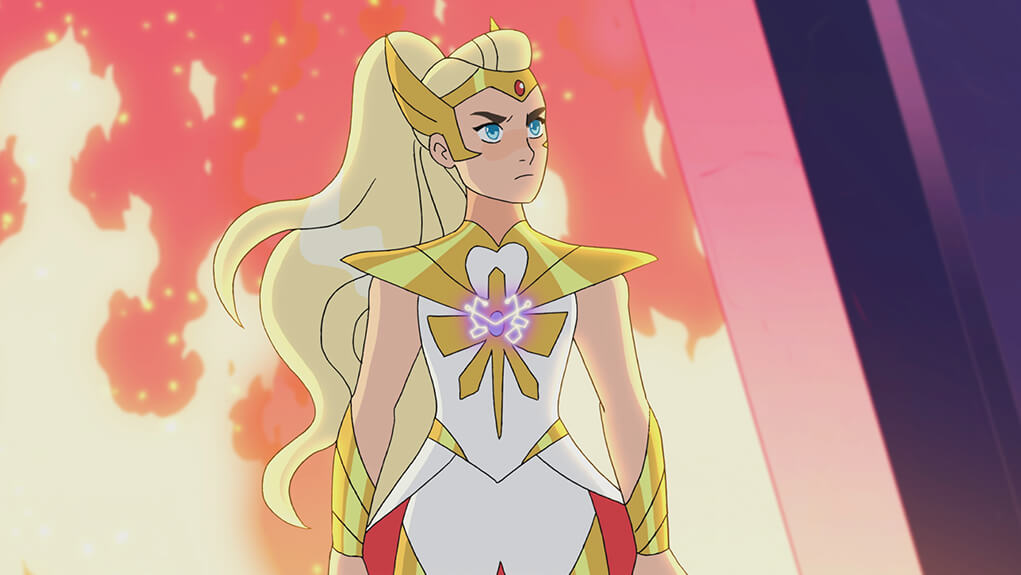
As hype was building for the release of the first season in 2018, people began picking up the hints on the relationship between Adora and Catra. It was then that Stevenson felt it was the right time to bring up the romantic element with the higher-ups and how it had been woven into the very fabric of the series. He brought what he describes as an airtight pitch for how She-Ra would end, planned long before the first episode ever hit the streams.
Fortunately, the studio was excited about it. Stevenson tells us, “They saw the potential in it and they gave us the go ahead, which was just such an incredible day. We had a clear road to be able to do this and I just burst into tears while I was out to lunch. It was just such a big moment for me that I had hardly allowed myself to even believe it was possible.”
“It’s important that kids see themselves, their families and their community represented in DreamWorks Animation shows. There are gay, bi and trans kids all across the world. And many kids are growing up with queer parents and relatives. We want to reflect the richness of our world in our animated worlds,” says Peter Gal, Chief Creative Officer at DreamWorks Animation Television.
He also notes, “[Nate] gave depth and drive to She-Ra ‘s journey through an emotionally conscious lens that made that journey undeniable. And [he] speaks the language of the next generation of storytellers who have new ideas about society and representation that need to be heard.”
From there, it was only support, positivity and excitement — both from Netflix and DreamWorks Animation as well as a dedicated community of fans, who are already demanding a She-Ra film. Following approval from the studios, Stevenson and his writers were able to infuse even more queer subtext into the show’s plot and dialogue.
Beyond Etheria, there does seem to be a massive growth in queer representation in children’s media — from a bisexual main character on Disney’s Owl House, to SpongeBob SquarePants coming out, to a gay marriage on Arthur, to Hulu’s The Bravest Knight, only time will tell if this is a trend or a transformation of kids’ storytelling.
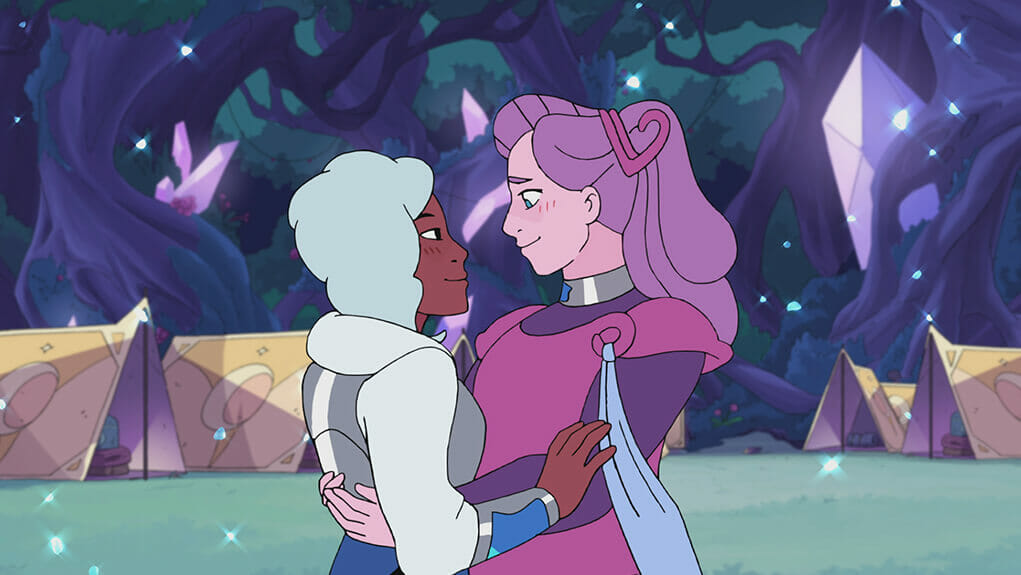
Megan Townsend, director of entertainment research and analysis at GLAAD, tells us, “In the past few years, we have seen such a boom of LGBTQ-inclusive programming in the kids and family space that are a hit with fans and also garner critical acclaim and success with Steven Universe, She-Ra, Rocko’s Modern Life, DreamWorks Kipo and the Age of Wonderbeasts, Adventure Time and more. This inclusion is reflecting reality – LGBTQ families and parents are part of the world experienced by kids, and should be part of the entertainment they see with their families. And LGBTQ youth, who are coming out at younger ages as cultural acceptance grows, deserve to see age-appropriate, positive and truthful representations of themselves on screen.”
She continues, “In some ways, [LGBTQ] characters can be possibility models for a young person wanting to know what they can look forward to. These stories accelerate acceptance within their peer groups who also love these characters, creating a safer environment for LGBTQ young people to be authentically themselves. As more LGBTQ characters have been included on screen, culture has in tandem moved forward in understanding and acceptance. This has allowed more and more young people to feel safe and empowered to come out and live authentically at younger ages.”
Townsend notes that while progress has been made, it has largely been because of a small group of inclusive producers. In order to maintain positive progress for LGBTQI+ storytelling and storytellers, she says networks and studios most not only hire queer and trans writers, but also invest in, develop and provide equal opportunities for advancement so those writers can eventually become showrunners, producers and powerful leaders themselves — elevating a new generation of high-quality diverse content.
For Stevenson, these macro-level changes are important, but so too have been the little changes: “It really does matter so much to me seeing the reaction from kids. Every time I see little kids learning to use they/them pronouns, or crying and cheering at the kiss scene, or little gender-nonconforming kids yelling FOR THE HONOUR OF GRAYSKULL, my heart just explodes with love and joy.”
Any chance that maybe their path in life will be a little easier, a little safer now, because of this show — it means the world to me.
– Nate Stevenson
He continues, “I remember way back before the show was even out, our editor Phil Lomboy showed a little of the animation to his niece who was like four or five and she said, ‘You know what? Girls can love boys, girls can love girls, boys can love boys and it’s all okay.’ This was so far before we were ever able to include anything textually queer in the show; I think it was just an early scene between Catra and Adora from the pilot, and she still picked up on that and got it. I think about that all the time.”
While the show may be over, that is the living legacy of DreamWorks She-Ra and the Princesses of Power. So what’s next for Stevenson? “I’ve got a couple of really cool things simmering that I’ll hopefully be able to talk about soon! Stay tuned!”
